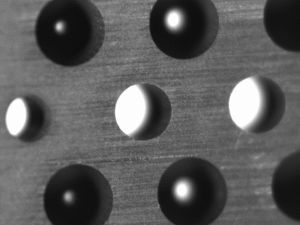2019 marks a definitive milestone for IoT, largely influenced by the upcoming launch of 5G in 2020. We already know that everything that can be connected will be connected. The next step is to build microscopic IoT gadgets whose design trends require niche-integrated, multifunctional solutions in the shape of different sensors that include connectivity. Mechanical and electrical engineering design trends towards monolithic componentry will be enabled by optimized mechanical and laser micromachining processes that support sensor applications in wireless communications, smart clothes, smart watches, Fitbits and automobiles.
Consequently, demands for smaller microholes, on tighter pitches and high aspect ratios, in all materials (both transparent and non-transparent), are evolving for applications dealing with HD Multi-layer Rigid PCB’s, Flexible PCB’s, IC Substrates, Wafer Vias and Calibrated Sensor Flow Orifices, in parallel to Supply Chain demands for lowest possible manufacturing costs in IoT’s new commodity markets. Fortunately, femtosecond ablative laser machining is well-positioned to meet these demands, as it removes material in virtually any shape or pattern on all substrates, on a repeatable basis. Features down to sub-microns (<1um) are achievable with controllable tolerances on a routine basis.
 Micro-holes in Stainless Steel
Micro-holes in Stainless Steel
 Micro-hole in Graphite
Micro-hole in Graphite
Femtosecond laser microdrilling facilitates small-to-high volume manufacturing of precision components with highly complex patterns. For example, 3D blind hole features can be consistently processed with depth resolutions within a few percent of the feature depth and resolutions as high as a few 10’s of nanometers.
Similar to application trends found in semiconductor, medical devices, and consumer electronics, IoT’s “gadgets” will require an increased focus on the fabrication of variable shape and small size features (<100 microns), on a large variety of materials in nano-to-millimeter thickness sizes. As expected, quality and huge throughput requirements will apply downward costing pressures to suppliers thus offering vertically integrated, added value, design and build opportunities into their products where the monolithic component itself becomes an assembly of multiple performance capabilities.
